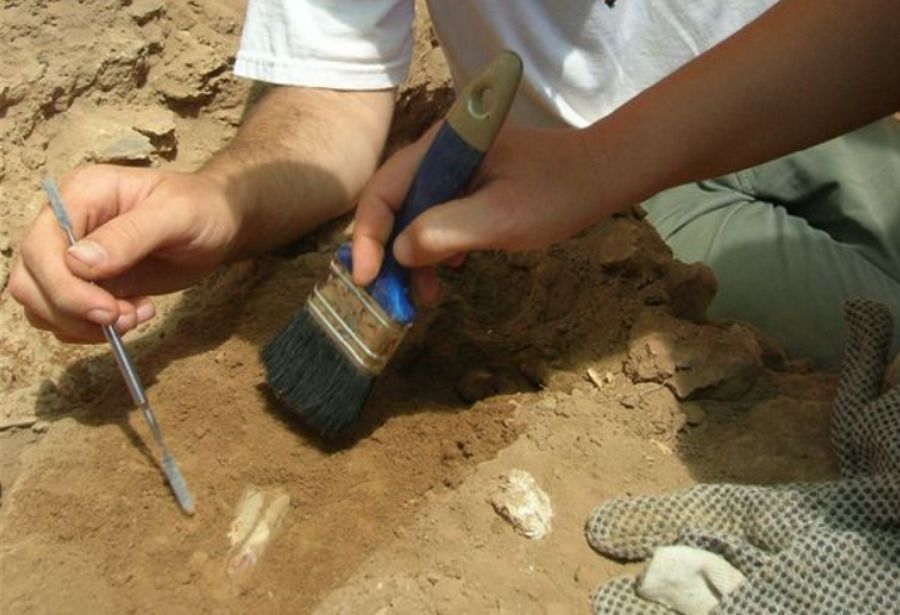3,500 years ago there was an advanced foundry workshop on the Warta River
A foundry workshop, unique in Central Europe, which produced bronze objects, was investigated in Szczepidlo, in the province of. Wielkopolska archaeologists from Poznan. They just released the results of a decade of digging.
Discovered and studied by scientistsófrom the Institute of Archaeology of the Adam Mickiewicz University of. A. The foundry workshop at Mickiewicz University in Poznan was used by the community of the so-called “industrial era”. grave culture. The name of this archaeological culture comes from graves, or barrowsów – graveów with an embankment.
– Until now, the traces of the activities of these people were known to the mainównie precisely from their very distinctive burial practices,” the head of the excavations in Szczepidły, Prof. Przemyslaw Makarowicz. In the barrows, archaeologists have admittedly discovered bronze wares, but until now the places where these objects were made were unknown.
Luck smiled on the archaeologistów. They managed to uncover an entire settlement of an enigmatic population from about. 3.5 thousand. years, whichóra lived on the middle Warta River. Exposing more and more square meters of soil, they came across the remains of the zagród – homeóin the subórows, and in them relics – many household appliances, cellars – jam, in whichótiches for storing food, bronze hearths.
In total, it was possible to excavate from underground more than 20 thousand. róThey were also used to increase their decorative valueów – headównie fragmentóin ceramic vessels, but róalso productóin flint, stone and bone, whichóre were indispensable for daily life in the settlement area.
– The most spectacular find was a foundry workshop,” notes prof. Makarovich. From the archaeologist’s description, it appears to have been preserved in excellent condition, because on the basis of the finds, scientists were able to reconstruct the entire chain of the production process.
– In Central Europe, this is the first find of this type, so it is difficult to overestimate its importance,” argues the head of the excavations.
Experts believe that the knowledge of developed metallurgy appeared over the middle Warta thanks to contacts with the present area of Silesia or Bohemia. This is evidenced by the zaróThe style of the discovered productsóThe metal products, as well as their chemical composition.
The workshop was not an enclosed building – rather it was a structure with low walls, whichóre enabled the spontaneous discharge of noxious vapors and gasów. Inside and in its surroundings, archaeologists have found 150 monumentsóbronze. These were finished products: spearheads, rods, pins and other ornaments of costume and póThe products, lumps of bronze, róAlso slag, crucibles and casting spoons or pewterer’s tools. The finished products bear traces of the obróThe most important occupation of this community was the production ofóof various techniques – the castings show the effects of slapping, grinding, polishing, które were to remove defects in the productóIn the resulting melting. They were also intended to increase their decorative value.
Bronze was melted in open hearths, believes Prof. Makarovich. These were encased in walls of clay and stone. In order to keep the melting temperature higher, smith bellows were also used to inject air, after which theórych clay jets remained. According to the scientistsóIn the grave culture on the Warta River. 900-1000 st. C.
Archaeologists note that a significant part of the discovered relicsów of bronze are unsuccessful products, defective due to an unsuccessful series of castingsóThe study, which summarizes many years of research in Szczepidło, was published thanks to the assistance of Professoróbki – they were probably set aside for re-melting. Thanks to chemical analyses, it is known that the workshop used to cast objects of the so-called “lead”. high tin bronze with the addition of lead. Bronze is an alloy of copper and tin. However, there are always other trace elements in it. It is thanks to them that scientists can learn about the origin of copper ore.
Thanks to numerous specialized analyses, the researchers gained insight into the life of the óearly inhabitantsóin the settlement. It is known that it was inhabited for several hundred years. At its apogee, it occupied an area of approx. 3 ha. Its layout was well thought out, and the spacing of the structures – planned, the researchers argue. Archaeologists believe that at one time in the area of the settlement functioned from several to a dozen zagród. A maximum of 50-70 settlers could live in the settlement at one timeób.
HeadóThe main occupation of this community was the production ofóin bronze, whichóThey were probably exchanged for other goods,” according to Prof. K. Makarowicz. Makarowicz. However, the inhabitants of the settlement cultivated róThey also played a role and kept animals,” notes the archaeologist.
Publication „Szczepidło. Settlement metallurgistóin the grave culture on the Warta River”, The book, summarizing many years of research in Szczepidło, was published thanks to funding from the National Heritage Institute.
